Introduction:
Sourdough bread is a type of bread made using a natural fermentation process that relies on wild yeast and bacteria present in the environment. Unlike commercial bread, which uses commercial yeast and additives to speed up the rising process, sourdough bread is made using a sourdough starter, which is a mixture of flour and water that has been left to ferment for several days or even weeks. This process results in a bread that is not only delicious but also nutritious and easy to digest.
What is Sourdough Bread?
Sourdough bread is a type of bread that is made without the use of commercial yeast. Instead, it relies on a sourdough starter, which is a mixture of flour and water that has been left to ferment for several days or even weeks. During the fermentation process, wild yeast and bacteria present in the environment feed on the flour and water mixture, producing carbon dioxide gas, which causes the bread to rise. The longer the fermentation process, the more complex the flavor of the bread.
Sourdough bread has a tangy and slightly sour flavor, which is why it is called sourdough. It also has a chewy texture and a crispy crust, which is why it is a favorite among bread lovers. In addition to its delicious taste and texture, sourdough bread is also rich in nutrients and easy to digest, making it a healthy alternative to commercial bread.
In the following sections, we will discuss in detail how to make your own sourdough bread from scratch.
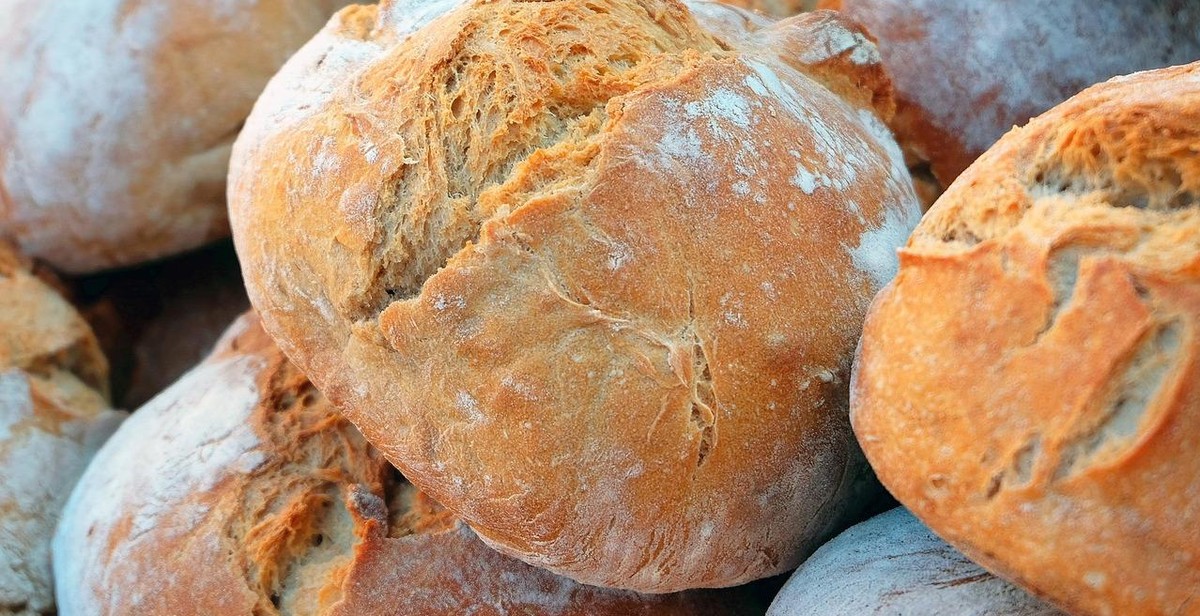
The Benefits of Making Your Own Sourdough Bread
Sourdough bread has been around for centuries and is known for its unique tangy flavor and chewy texture. It is made by fermenting dough using naturally occurring yeast and bacteria, rather than commercial yeast. Making your own sourdough bread has numerous benefits, both for your health and for the environment.
1. Health Benefits
Commercially produced bread is often made using additives and preservatives that can be harmful to your health. Making your own sourdough bread ensures that you know exactly what ingredients are going into your bread. Sourdough bread is also easier to digest than commercial bread because the fermentation process breaks down the gluten, making it easier for your body to process.
2. Cost Savings
Buying sourdough bread from a bakery can be expensive, but making your own can save you money in the long run. Once you have a starter, you can continue to make sourdough bread indefinitely at no additional cost. Additionally, making your own bread can help reduce food waste by using up leftover ingredients.
3. Environmental Benefits
Commercial bread production can have a negative impact on the environment due to the use of pesticides, fertilizers, and transportation emissions. By making your own sourdough bread, you can reduce your carbon footprint and contribute to a more sustainable food system.
4. Creative Control
Making your own sourdough bread gives you complete control over the ingredients and flavors. You can experiment with different types of flour, herbs, and spices to create a unique and personalized bread.
5. Satisfaction
Finally, there is a sense of satisfaction that comes with making your own bread. The process of creating sourdough bread from scratch requires patience and skill, but the end result is a delicious and nutritious loaf of bread that you can be proud of.
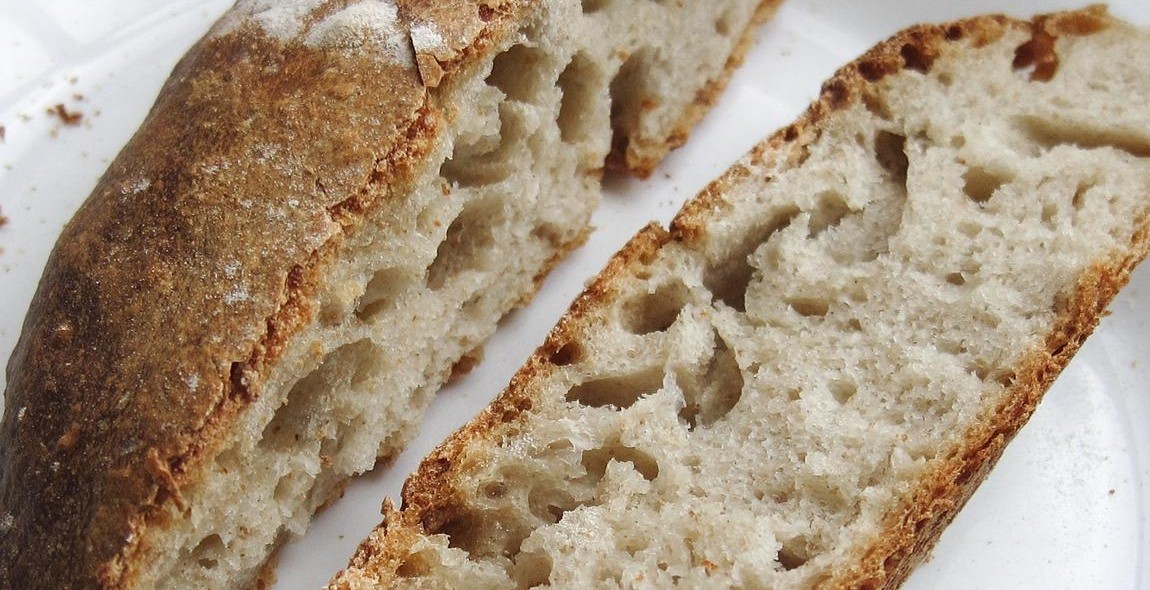
Ingredients Needed
Before you start making your own sourdough bread, you will need to gather the following ingredients:
| Ingredient | Amount |
|---|---|
| Flour | 3 cups |
| Water | 1 ½ cups |
| Salt | 1 ½ tsp |
| Sourdough Starter | 1 cup |
Flour
The type of flour you use will affect the flavor and texture of your bread. It is recommended to use unbleached all-purpose flour or bread flour. You can also combine different types of flour to achieve a unique flavor.
Water
Water is a crucial ingredient for making sourdough bread. It is recommended to use filtered or bottled water as tap water may contain chlorine or other chemicals that can harm the sourdough starter.
Salt
Salt not only adds flavor to the bread but also helps regulate the fermentation process. It is important to use the right amount of salt to avoid over or under fermentation.
Sourdough Starter
Sourdough starter is a mixture of flour and water that has been fermented with wild yeast and bacteria. It is the key ingredient that gives sourdough bread its unique flavor and texture. You can make your own sourdough starter or purchase one from a local bakery or online.

Creating a Sourdough Starter
If you want to make sourdough bread from scratch, the first thing you need to do is create a sourdough starter. A sourdough starter is a mixture of flour and water that has been fermented by wild yeast and bacteria. This mixture is what gives sourdough bread its distinctive tangy flavor and chewy texture.
Ingredients Needed
Creating a sourdough starter requires only two simple ingredients: flour and water. It’s important to use unbleached all-purpose flour or whole wheat flour. Avoid using self-rising or bleached flour as they contain additives that can interfere with fermentation.
Creating the Starter
- Mix 1 cup of flour with 1/2 cup of water in a glass container. Stir well until there are no lumps.
- Cover the container with a cheesecloth or a towel and let it sit at room temperature for 24 hours.
- After 24 hours, you should see some bubbles forming on the surface of the mixture. This means that the wild yeast and bacteria are starting to ferment the mixture.
- Discard half of the mixture and add 1/2 cup of flour and 1/4 cup of water. Mix well and cover the container again.
- Repeat this process every 24 hours for 5-7 days or until the mixture becomes bubbly and has a sour smell. This means that your sourdough starter is ready to use.
Feeding the Starter
Once your sourdough starter is ready, you need to maintain it by feeding it regularly. To do this, discard half of the mixture and add 1/2 cup of flour and 1/4 cup of water every 12 hours or once a day. This will keep the wild yeast and bacteria active and healthy.
| Sourdough Starter Maintenance | Ingredients | Instructions |
|---|---|---|
| Discard half of the starter | 1 cup of starter | Discard half of the mixture and keep the other half. |
| Feed the starter | 1/2 cup of flour and 1/4 cup of water | Mix well and cover the container. |
| Repeat | Repeat every 12 hours or once a day. |
Now that you have created and maintained your sourdough starter, you can use it to make delicious sourdough bread from scratch.
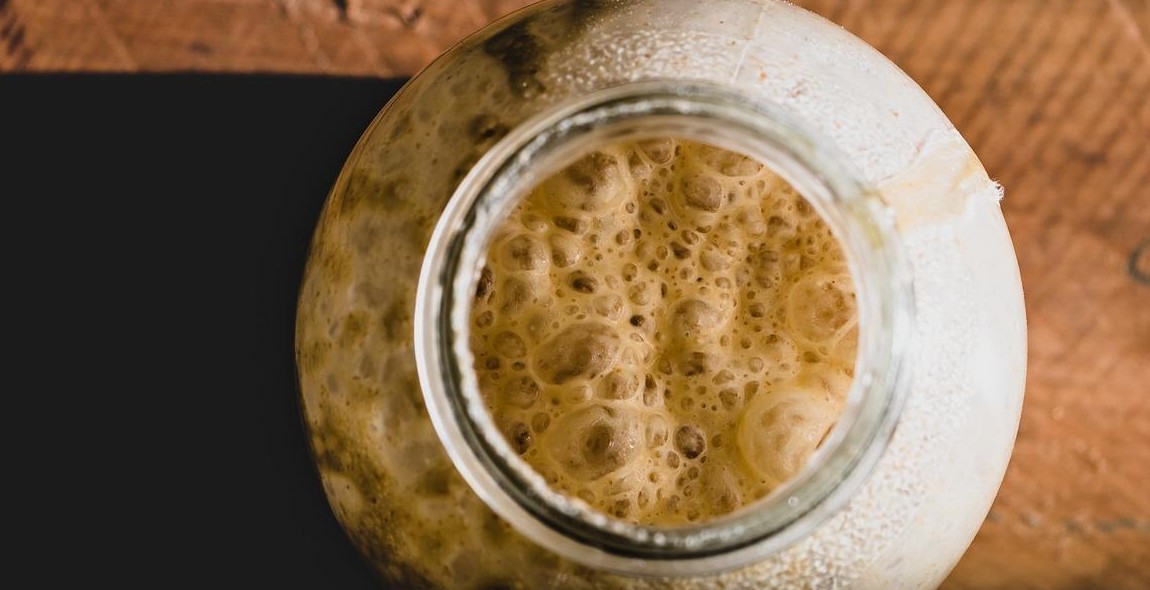
Making the Dough
Before you start making your sourdough bread from scratch, you need to understand the process of making the dough. The dough-making process involves mixing the ingredients, kneading the dough, and letting the dough rise.
Mixing the Ingredients
The first step in making the dough is to mix the ingredients. To make sourdough bread, you will need flour, water, and a sourdough starter. The sourdough starter is a mixture of flour and water that has been fermented by wild yeast and bacteria, giving it a sour taste.
When mixing the ingredients, it is important to measure them accurately. You can use a kitchen scale to ensure that you have the right proportions. Mix the ingredients in a large bowl until they form a shaggy dough.
Kneading the Dough
Kneading the dough is the next step in making sourdough bread. Kneading helps to develop the gluten in the dough, which gives the bread its structure and texture.
To knead the dough, turn it out onto a floured surface and knead it for about 10 minutes. Use the heel of your hand to push the dough away from you and then fold it back over itself. Repeat this process until the dough is smooth and elastic.
Letting the Dough Rise
After kneading the dough, it needs to rise. This process is called fermentation. During fermentation, the yeast in the sourdough starter consumes the sugars in the flour and produces carbon dioxide gas, which causes the dough to rise.
To let the dough rise, place it in a bowl and cover it with a damp cloth. Leave it in a warm place for 6-12 hours, depending on the temperature and the strength of your sourdough starter. During this time, the dough will double in size.
Now that you have made the dough, it is time to shape it and bake it. Keep reading to learn how to shape and bake your sourdough bread.
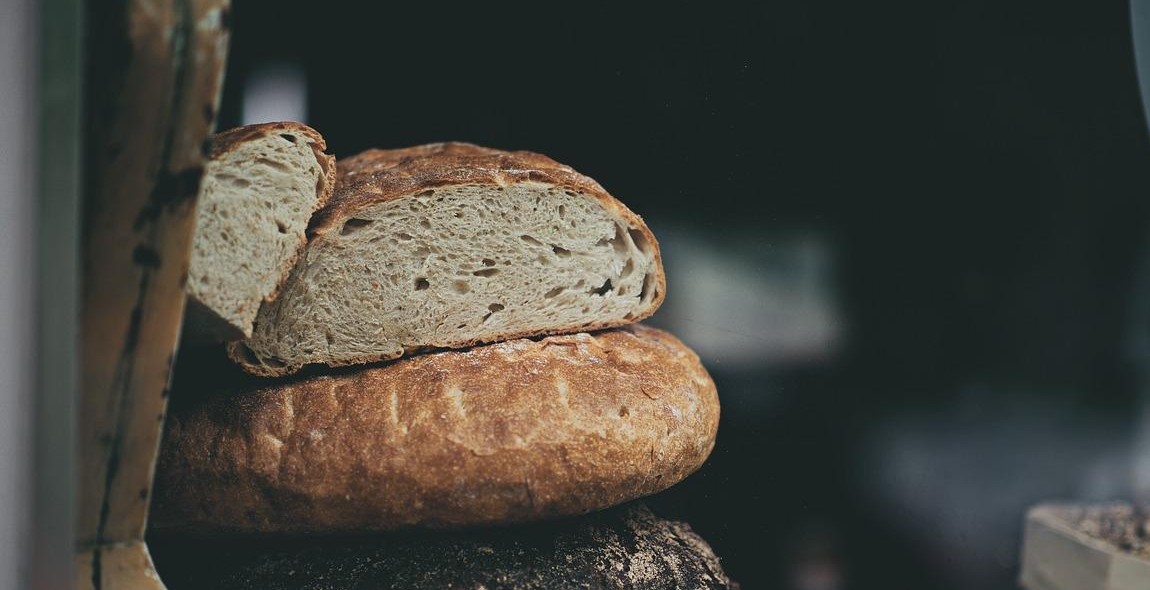
Baking Your Sourdough Bread
After the dough has been proofed, it’s time to bake your sourdough bread. Here’s what you need to do:
Preparing Your Oven
Preheat your oven to 450°F (230°C) with a baking stone or Dutch oven inside. If you are using a Dutch oven, preheat it for 30 minutes before baking. The baking stone or Dutch oven will help create a crisp crust on your bread.
Shaping the Dough
Take the proofed dough out of the bowl and place it on a floured surface. Gently shape the dough into a round or oval shape, being careful not to deflate it too much. Place the shaped dough on a piece of parchment paper.
Scoring the Dough
Using a sharp knife or bread lame, score the top of the dough with a few slashes. This will allow the bread to expand and rise properly in the oven.
Baking the Bread
Using the parchment paper, carefully transfer the shaped dough onto the preheated baking stone or into the preheated Dutch oven. If using a Dutch oven, cover with the lid and bake for 20 minutes. After 20 minutes, remove the lid and continue baking for another 20-25 minutes until the crust is golden brown.
If using a baking stone, bake for 30-35 minutes until the crust is golden brown. To check if the bread is done, tap the bottom of the loaf. It should sound hollow.
Once your sourdough bread is done, remove it from the oven and let it cool on a wire rack for at least an hour before slicing.
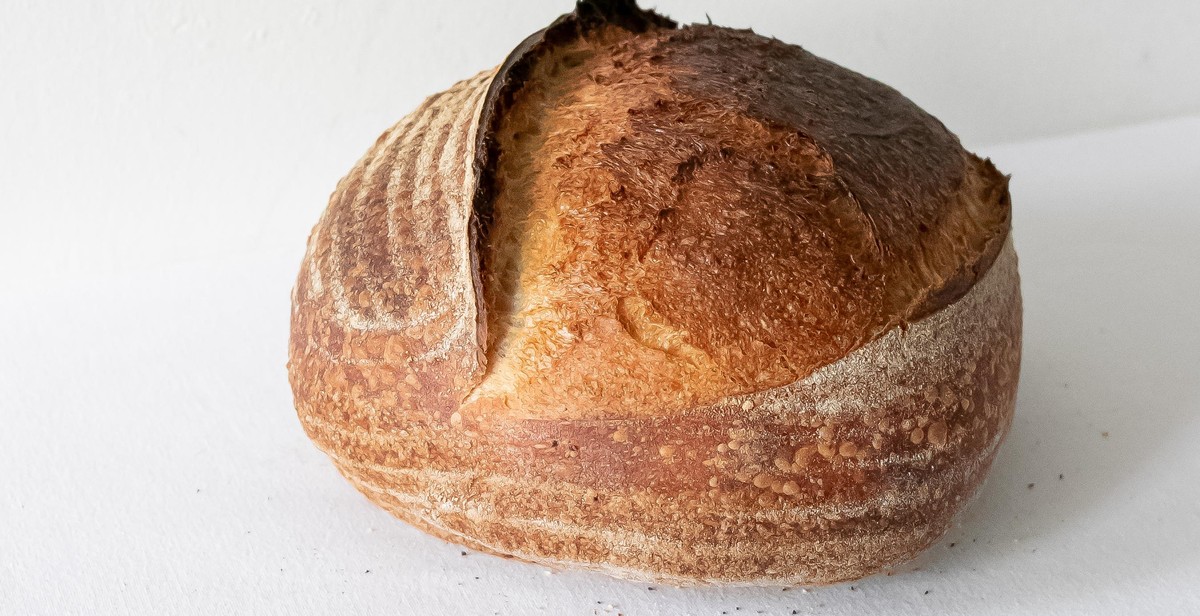
Conclusion
If you’ve made it this far, congratulations! You are now well on your way to becoming a skilled sourdough bread baker. Making sourdough bread from scratch may seem intimidating at first, but with practice and patience, it can become a rewarding and enjoyable experience.
Remember to keep your sourdough starter healthy and active by feeding it regularly and giving it time to ferment. Experiment with different flours and techniques to find what works best for you.
One of the great things about sourdough bread is its versatility. You can use it to make sandwiches, toast, bread pudding, and even croutons. Plus, it’s a healthier alternative to store-bought bread, as it contains natural yeast and bacteria that aid in digestion and nutrient absorption.
So go ahead, give sourdough bread a try. It may take some time and effort, but the end result is worth it – a delicious, homemade loaf of bread that you can be proud of.
Additional Resources
- King Arthur Baking Company’s Guide to Sourdough
- The Perfect Loaf’s Sourdough Guides
- Breadwerx’s Sourdough Videos
Sourdough Bread Recipe Recap
| Ingredients | Instructions |
|---|---|
| 1/2 cup sourdough starter | 1. Mix starter with flour and water 2. Let dough rest 3. Fold dough and let rest again 4. Shape dough and let rise 5. Bake in a Dutch oven |
| 3 cups flour | |
| 1 1/2 cups water | |
| 1 tsp salt |
